12 Financial Literacy Books for Teens and Kids | Codeyoung
Introduction to the Importance of Financial Literacy for Kids
Teaching children about money is important for their future success. Financial literacy helps them learn the necessary skills to manage their finances effectively. Financial education books can be a great resource to instill these skills in children. It influences their ability to safeguard and improve their financial futures. Books about money are especially helpful in understanding the role of money (capital) in our lives. It has a terrific role to play in modern life. Financial literacy books provide insights into money management as a medium through which one can acquire goods and services. Not only this, but they also help secure basic needs, like making informed investment decisions. Books to learn financial literacy are surely required to fulfill a balanced life.

There are ways by which parents can inculcate the values of financial literacy in their child:
Reading is an essential habit which must be developed in children from a very young age. Books can be a fun and effective way to teach kids about money. Books can also introduce children to the stock market, helping them understand market fluctuations and investment strategies through engaging stories and examples. The concept of capital is diverse and wide; it can not be explained with mere examples. Literature is a good way to make children familiar with the importance of capital along with its management.
There are financial literacy books which can be a right hand for young minds to learn about financial literacy, personal financial management, and budgeting. It is a form of education which does not require an institution for a child to be in; instead, it is an important life skill. These books about money can help secure children’s financial futures by providing them with the knowledge and skills needed to make informed financial decisions. Reading books to learn financial literacy is an excellent way to build these essential skills, as they serve as valuable financial education books for young learners.
Moreover, such books can prepare young minds for financial independence by teaching them effective capita management skills like earning and saving. This solid understanding of personal finance is crucial as they transition into adulthood, helping them achieve financial security. Reading financial literacy books will eventually engage them into the practice of research which can develop their analytical skills. They can help secure children’s financial futures by providing them with the knowledge and skills needed to make informed financial decisions.
Why Teaching Financial Literacy is Important for Kids?
Money is a medium which gives access to materialistic things and its pleasure, but it is also necessary to ensure financial stability and security. Such a management of finances can only be taught to a child with the assistance of financial literacy.
Parents must teach their children how to budget, save, and invest. Introducing children to the stock market can be a valuable part of their financial education, helping them understand how investments grow and the importance of making informed stock choices. Reading books to learn financial literacy can further help young minds develop essential skills to navigate financial challenges with time. Learning financial literacy has no age; it is a continuous process. It is a part of education that can also accelerate a sense of responsibility and financial independence in them. The importance of this knowledge is realized when kids learn to make informed decisions about their finances.

In addition, a solid foundation in personal finance can lead to smart financial choices. It is a sign of progress and growth. The sound understanding of capita in growing years becomes paves a way for rewarding roads in future. Along with this, a clear difference between cash and credit must be explained to a child as early as possible so that they can save and spend accordingly.
Preparing young adults can encourage them to have savings goals that are relevant to overcoming financial problems, and referring to financial education books can help them stay informed and motivated.
Developing Sound Financial Habits Early
Parents must realize that investing capital in education alone is not enough; investing time with their children is equally required and necessary. Since, learning financial literacy is not an overnight job. It must be developed as a habit in sometime which is only possible when parents are willing to teach children about it. For example, while going out for grocery shopping, parents must deliberately reject an expensive and luxury item and choose a pocket friendly commodity in front of their kids, so that they learn a little part of managing money merely through observations.
Parents can also discuss the stock market with their children, explaining how it works and even engaging in simulated investing activities to make the learning process interactive and fun.
Apart from this, parents can also consider discussing their savings goals and budget with their kids so that they can be mindful of their earned income and plan their spending with regards to that earned income.
This can also motivate kids to start saving as early as possible. They can maintain a little piggy bank in which they can regularly save their capita as a financial backup.

Acknowledging the importance of establishing financial habits at a young age can allow children to learn better when they are managing their own money, as it provides a sense of responsibility and a deeper understanding of financial literacy. Giving them liberty to handle their own money through practical experiences such as allowances and can teach them the value of capita.
Setting up a savings account for young minds must be an immediate action. It encourages saving habits and helps them understand how income can be utilized effectively and efficiently with the help of savings which can render interest; finances earned through interest can be an additional income. Older kids tend to collect this amount in their piggy bank.
Preparing for the Future
Financial Literacy is the Alternative for the Future Financial Growth
Financial literacy is essential for establishing the foundation for future financial growth and security. Understanding the stock market and how to invest wisely can also contribute to long-term financial growth and stability. Understanding concepts related to finance such as debt management can be a guiding force for the kids which can prevent them from accumulating excessive debt that could negatively impact their credit scores. By being financially literate, a child is properly equipped to make informed decisions that lead to financial stability and growth. Such a set of knowledge including personal financial management is a way through which young minds understand the functioning of a particular business which aspires them to aim big and learn top tips from financial professionals can be more valuable than higher education.
There’s no harm in planning for future already. A regular check on spending by making a chart of expenses can reduce financial stress which will prevent debt and credit. Instead with this capital, one can earn interest: compound interest. This can be termed as free money which many be utilized to generate more revenue through interest rates, investments, trade offs, roth ira and research.

Moreover, planning for retirement savings from the beginning can enhance the time value of savings goals in life, which can prove to promise financial security later in life. Exploring books about money can help individuals build the knowledge needed to manage their finances effectively. Relying on employer-sponsored retirement savings accounts like 401(k) plans and Individual Retirement Accounts (IRAs) is an excellent example of financial skills, including personal growth, often discussed in financial education books.
How to Select the Best Money Management Books for Kids
Reading as a habit is difficult to develop. However, it is not impossible. Before delving young minds into the world of financial literacy books, it would be healthy if parents engage in teaching kids about finances already. Some practical examples must be given to young minds so that they start to create an interest in learning financial literacy without the need for explaining them in detail. Recommending books about money can also be a great way to introduce children to financial concepts early on. These financial education books can act as a stepping stone to help them develop a lifelong understanding of money management.
Parents should begin from creating a thrill in their child just as they are while buying movie tickets. They should accompany their child to the bookstore and take them to the shelves around which money related books are assembled. This is a sound practice to offer independence and liberty to young minds so that reading comes naturally to them. Mind you! Children can be creative with their choices which lands them with confidence and sense of accomplishment.
Look for books about money that also introduce concepts like the stock market, helping children understand investment strategies and market dynamics.
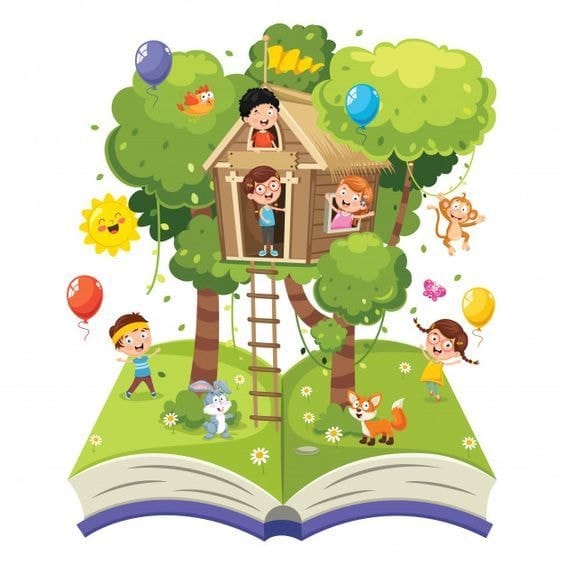
In such a case, book covers are like paid actors which can attract the child towards the book and the tale does not end here; when the child is flipping through the pages, he or she may anticipate images and graphics in the book which is the key element to keep them hooked.
Before handing a financial literacy book to a kid, make sure that the kid is interested in reading.
A good financial literacy book for kids should be engaging, using simple language and relatable examples. It should help children understand and manage their financial life by discussing books about money and financial matters openly. It will positively influence their perceptions about finances. The book should cover essential topics such as:
budgeting
saving
investing
financial literacy
In such a way it is easy for children to grasp. Along with this, books to learn financial literacy should include interactive elements like activities or quizzes to strengthen learning. These books about money must be constructed in a way that fosters basic concepts of sound financial planning like security, savings and personal finance.
Essential Elements in Financial Literacy Books
1. Age-Appropriate Content
Generally books are considered to be a piece of art which contains elements of creative writing. However, these books have fancy language and might contain technical terms or jargon to some extent. Parents must pay attention and review the financial literacy books before buying them. They must be given access to books which are age-appropriate. The ideal book should be written in simple language and must be easy to comprehend for a child. One of the top tips is to make a child financially literate through books.
2. Engaging and Fun
Children won't find a book interesting until and unless it is engaging, colorful, and creative. Young minds tend to need a break from their mundane school textbooks; financial literacy books which have pictures, graphics, and comics are possibly more liked by them because it gives them a chance to try something different from the ordinary. These books to learn financial literacy can also introduce them to essential concepts while keeping the learning fun and interactive.
Conversational books adds more value to the learning as it assures a warm space for a child to learn, practice and apply concepts.
3. Educational Value
The whole purpose of financial literacy books is not only to impart and imbibe financial education in kids but make them independent in a way that they can take financial decisions independently. They must understand the meaning of basic terms like debit and credit which can make help them to make smart financial choices for their present as well as the time to come. The main motive of these books is to teach a child that how can they do cost-saving and make a call between needs and wants.
The Top 12 Money Books for Kids
Mary Schmich rightly said once, "Reading is a discount ticket to everywhere." Following are 12 books which are specially designed for finance related skills including personal financial management.
1. "The Berenstain Bears' Trouble with Money" by Stan and Jan Berenstain
"The Berenstain Bears' Trouble with Money" by Stan and Jan Berenstain offers a child-friendly approach about exploration of financial responsibility. The book also discusses the consequences of mismanagement free money. The story has two characters, Brother and Sister Bear, who, after receiving money, face challenges when they spend it recklessly. Now it must be looked upon carefully that the audience is very young and the purpose to mention this here is to make them distinguish between important expenses and impulsive buys.

The narrator effectively uses the Bears' experiences to demonstrate key financial concepts: saving, budgeting, and the value of hard work. Through relatable situations and simple language, the book imparts practical lessons about management of finances while maintaining engaging and accessible storytelling for young readers. Its straightforward delivery makes it a useful tool for introducing basic economic principles to young minds.
2. "Alexander, Who Used to Be Rich Last Sunday" by Judith Viorst
"Alexander, Who Used to Be Rich Last Sunday" by Judith Viorst is a humorous story. It is about a young boy named Alexander who quickly expends the money he saved. The book humorously depicts Alexander's financial decisions and their consequences.

The book promises to offer a valuable lesson on budgeting and the fleeting nature of wealth. Through simple, colloquial language and expressive illustrations, Viorst perfectly conveys the importance of managing finances wisely. Such a creative approach makes it a delightful and educational, relatable read for children.
3. "If You Made a Million" by David M. Schwartz
"If You Made a Million" by David M. Schwartz is an engaging and educational book that introduces children to basic financial concepts in an easy manner. Through its playful illustrations and simple explanations, the book explores various aspects of finance: earning, saving, and spending.
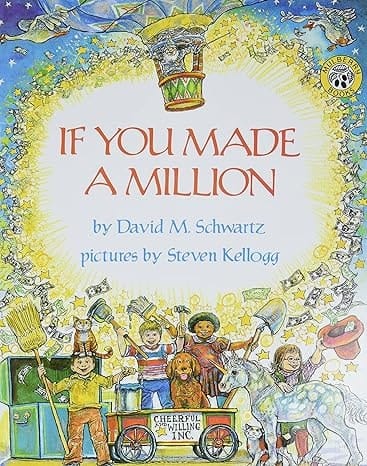
The book effectively explains financial terms and processes, making complex ideas understandable for young readers. Schwartz's ability to combine humor with education ensures that children not only learn about money but also enjoy the learning process. It serves as a valuable resource for introducing financial literacy to kids.
4. "One Cent, Two Cents, Old Cent, New Cent" by Bonnie Worth
"One Cent, Two Cents, Old Cent, New Cent" by Bonnie Worth is a delightful exploration of American currency for young readers. As the subtitle itself suggests about what the book is about. Through playful rhymes and vibrant illustrations, the book simplifies the history and value of capital. It makes it educational and engaging.
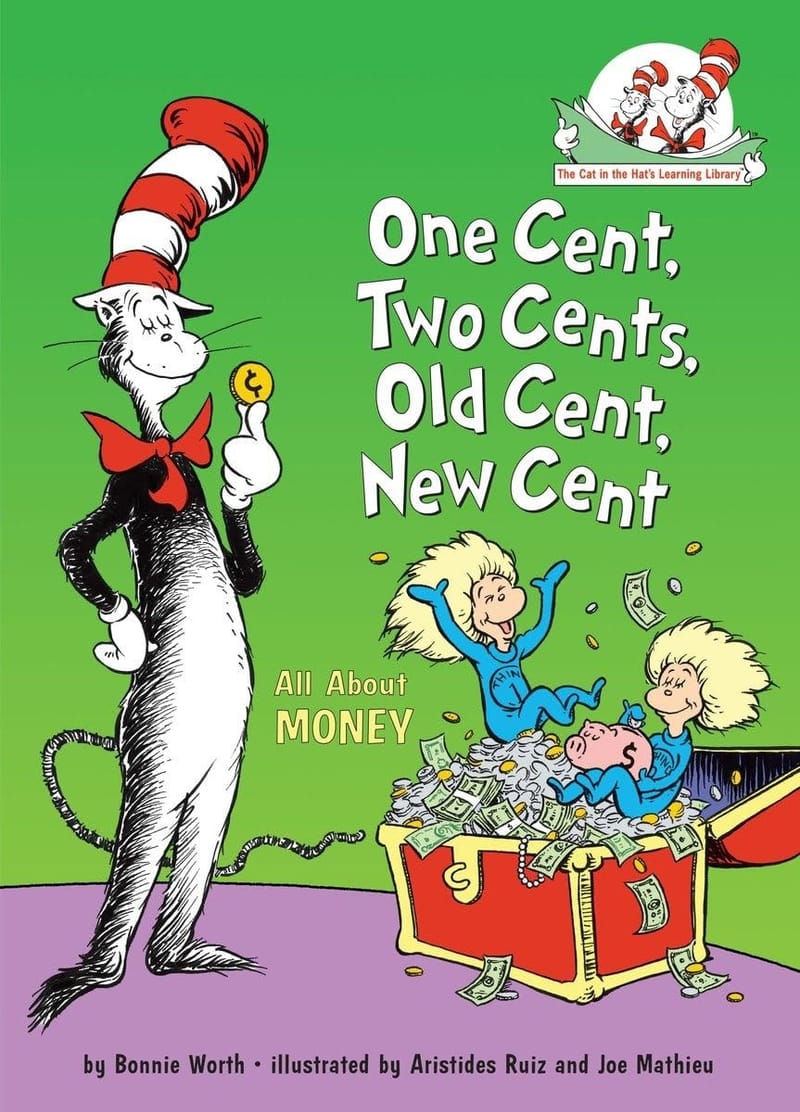
Worth's approach effectively introduces children to the concept of coins and their significance, blending historical context with simple language. This book serves as a fun and informative tool for teaching basic financial concepts.
5. "Rock, Brock, and the Savings Shock" by Sheila Bair
"Rock, Brock, and the Savings Shock" by Sheila Bair provides a comprehensive guide to teaching kids about the value of money and the importance of saving. It help kids understand the importance of setting up a bank account, which can be a crucial step in managing their finances as they grow older.

By using real-life examples and engaging activities, the book emphasizes taking advantage of teachable moments to instill good financial habits, such as saving a portion of their earnings and selecting a bank that offers various credit products on favorable terms.
6. "The Everything Kids’ Money Book" by Brette Sember
"The Everything Kids’ Money Book" by Brette Sember is a detailed text that introduces children to the fundamentals of the management of income is done. With the help of engaging activities, clear explanations, and practical tips, the book covers: earning, saving, and budgeting in a way that is both educational and easy to understand.
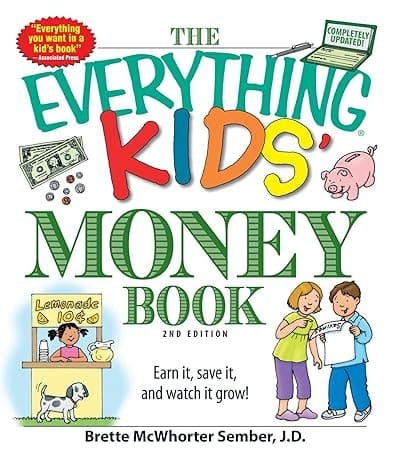
Sember's prolific writing makes complex financial concepts understandable The book’s interactive elements and simple language meets the demands of learning about financial matters is both fun and informative.
7. "Lemonade in Winter: A Book About Two Kids Counting Money" by Emily Jenkins
Lemonade in Winter: A Book About Two Kids Counting Money" by Emily Jenkins articulately introduces basic concepts of entrepreneurship and financial decision-making. She explains it through the simple act of setting up a lemonade stand in winter, siblings Pauline and John-John learn about the value of capital, the importance of making informed choices, and the realities of profit and loss. It teaches them the importance of making informed choices.

The colorful illustrations and rhythmic text engage children, making it an effective tool for introducing economic concepts to kids.
8. "The Kids’ Money Book" by Jamie Kyle McGillian
"The Kids’ Money Book" by Jamie Kyle McGillian is a non-fiction book which serves as a comprehensive guide for older children who have the right age to get into financial literacy. It covers topics like saving, budgeting, investing, and even understanding the basics of banking and credit.

McGillian's writing is infused with clarity which makes it easier for young readers to comprehend. The includes practical tips and interactive elements, like quizzes and exercises.
9. "Money Ninja: A Children’s Book About Saving, Investing, and Donating" by Mary Nhin
"Money Ninja: A Children’s Book About Saving, Investing, and Donating" by Mary Nhin is a part of the Ninja Life Hacks series, it simplifies complex financial concepts like saving, investing, and donating by developing them within a narrative that children can resonate to.

The use of the word "ninja" is engaging and likely to appealing, making the learning process like a fun adventure than a lesson.
10. "A Chair for My Mother" by Vera B. Williams
"A Chair for My Mother" by Vera B. Williams touches on important themes like saving, family cooperation, and the value of hard work. It is the story of a young girl and her mother who are saving money to buy a chair after a fire destroyed their home is both touching and educational.

It explains young readers about the importance of patience, sacrifice, and the emotional rewards of saving for a good capital in future. The book emphasis on family and community ties; it adds a layer of social consciousness that enriches its economic message.
11. "Count on Pablo" by Barbara deRubertis
"Count on Pablo" by Barbara deRubertis blends math and money lessons in a narrative about a young boy, Pablo, helping his grandmother sell vegetables at the market. Through counting, calculating, and dealing with customers, Pablo learns about the practical applications of math in everyday life.
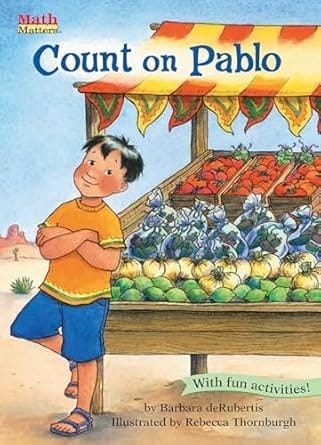
The story is effective in showing how math skills are directly connected to financial literacy, and the cultural context adds richness to the narrative. However, the book might benefit from a more explicit discussion of the finance-related aspects to reinforce the financial lessons.
12. "Sam and the Lucky Money" by Karen Chinn
"Sam and the Lucky Money" by Karen Chinn is set during the Chinese New Year. The book explores themes of generosity, empathy, and the value of money. Sam receives "lucky money" from his grandparents and must decide how to spend it. The book beautifully illustrates the internal conflict children often face between immediate gratification and more meaningful use of money.

The multicultural setting enriches the narrative, providing a glimpse into Chinese traditions while conveying universal lessons about financial responsibility and compassion. The book’s strength lies in its ability to blend cultural education with financial literacy in a way that is accessible and relatable for young minds.
How to Incorporate These Books into Teaching Kids About Money
Reading as a process seems a lot to young readers and it can be a task to develop this habit into them but it is not impossible. Parents must give dedicated time to their wards and make it appear like a fun activity. However, it must be noted that this activity must not make them feel that it is academic; this can create pressure on them which might dissuade them from financial literacy books. A great way to make reading more engaging could be incorporating financial education books that teach children about important concepts like financial literacy in a fun way.

Following are the suggestions which must be taken into consideration:
Reading Together
Parents are the role models for every child. They tend to observe and imitate them. So, in such a case, guardians can take advantage of this and use it for the bright future of their younger ones.

Guardians must choose screen over a book in their hands in their leisure time so that it can create an urge inside the child to read. Patience is the key, if they are handled well and in no time they can develop a marvelous habit which will benefit them lifelong.
Practical Activities
Reading alone is not enough until the theory is not practiced practically. Once a book is read, it must be ensured that the learnings are tried and tested in real life.
Suggested activities that complement the lessons in the books:
1. Budgeting Exercise: Make sure that the finances are explained to the young reader and the limit to spend money should be given already so that they do not fall short of enough cash which will be required them in case of unforeseen events.

2. Savings Goal: Encourage the younger one to save so that they don't have to procrastinate about their potential purchase. Help them create a plan to save for it, and track their progress together. This teaches them the value of saving and delayed gratification.

3. Shopping Comparison: A child can only learn through observations. When guardians go shopping, they must look out for both the items: pocket friendly and expensive. This will allow the child to know the difference between a necessary expenses and luxurious expenses.

Reinforcement and Practice
Ideas for reinforcing the concepts learned in everyday situations
Making an Informed Choice: Understanding the impact of financial decisions is crucial for long-term stability. One way to apply these concepts is by creating a budget that tracks all income and expenses. This helps in identifying areas where capital can be saved and avoided in unnecessary expenditures.
Staying Aware: Awareness is very important in financial matters, it can tell about potential risks and threats. Stay updated with the help of reading articles, watching videos, and listening to podcasts can provide valuable insights into managing finances better.

Usage of Financial Tools: It's beneficial to use financial tools and apps that can help manage income and cash more efficiently. These tools often come with features that allow to set financial goals, budget yourself and track spending.

Making Long Term Goals: Understanding student loans and interest rates and their impact on financial health is equally important. The significant burden of student loan debt among millennials contributes to their overall financial instability, making it crucial to comprehend student loan and its far-reaching implications.
Conclusion
Importance of Teaching Kids About Money
It is important to build a strong foundation in younger ones in all the aspects. It should not be restricted to matters related with education, health and growth. Rather, it should be understood that learning is a diverse process and knowing about finances is very crucial. Everyone must know economic concepts irrespective of their age. It is better that owing to evolving technology that younger children understand the basic terms as early as possible in their growing years.
Encouragement to Start Building Financial Literacy Early with the Help of these Books
Books are the best way to delve younger children into the world of finance and its management. It is important for younger generations to know about business, credit, credit report and debit cards. There must be a sync between practical life as well as theory. A child cannot grasp these complicated concepts unless they try it by themselves. This will motivate them to think before they pay for anything. They can learn how to start saving with these financial education books. In short, it will serve the purpose of education and will be beneficial for their potential future.
Encourage Parents to Pick a Book from the List and Start Today
Good things should not wait. Don't procrastinate in choosing the right financial literacy book for your child. We've kept you sorted with the books about money mentioned below:
"The Berenstain Bears' Trouble with Money" by Stan and Jan Berenstain
"Alexander, Who Used to Be Rich Last Sunday" by Judith Viorst
"If You Made a Million" by David M. Schwartz
"One Cent, Two Cents, Old Cent, New Cent" by Bonnie Worth
"Rock, Brock, and the Savings Shock" by Sheila Bair
"The Everything Kids’ Money Book" by Brette Sember
"Lemonade in Winter: A Book About Two Kids Counting Money" by Emily Jenkins
"The Kids’ Money Book" by Jamie Kyle McGillian
"Money Ninja: A Children’s Book About Saving, Investing, and Donating" by Mary Nhin
"A Chair for My Mother" by Vera B. Williams
"Count on Pablo" by Barbara deRubertis
"Sam and the Lucky Money" by Karen Chinn
This outline provides a structured guide for the blog writers to expand on each section, ensuring a comprehensive and engaging post.
About Codeyoung

Codeyoung is the best platform for your kids to delve into the world of coding and financial literacy. We're an internationally certified program by STEM.ORG.
Codeyoung has more than 30,000 students across the globe and the top mentors who are learnt and carry an ability to teach children coding and financial literacy in the most easiest manner.
Students also get lifetime access to the learning platform so they can access the course at their convenience and they also have the opportunity to connect with other students across the globe.
Don't wait to book a demo class with us!
Benefits of doing Codeyoung's Financial Literacy Program
Parents get fortnightly updates about their child's performance.
24*7 dedicated student success managers are available for you to ensure you get an amazing experience.
What are you waiting for? Book a free demo now!
Financial Literacy Books For Kids - FAQ
How do I set my child up for financial success?
The best way to lead your child towards financial growth is by making them enlightened about the basic concepts of financial literacy and personal finance. The above suggested financial education books can be a good path for them to begin their sound economic journey for a fulfilling up-comings. You can also explore financial literacy books and books about money for more in-depth knowledge. These books to learn financial literacy are perfect tools to instill financial wisdom from an early age
Is the book 'Psychology of Money' worth reading?
"The Psychology of Money" by Morgan Housel explores many themes and criteria to consider the capital. The book talks about many aspects which are crucial to learn and apply in real life.
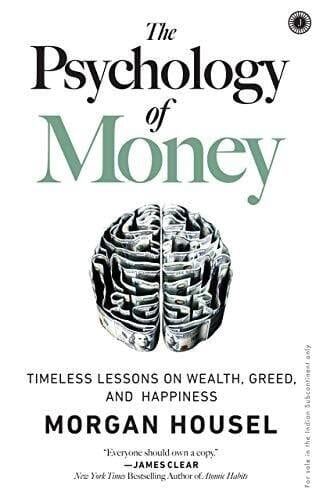
This is what makes it worth reading as it teaches how to deal with patience and how to manage emotions in a sensitive situation practically, offering valuable financial literacy insights.
Why is it important to be financially literate?
It is important to be financially literate because of the following reasons:
Sound economic decisions
Learning the value of own money
Mastering the skill of managing budget
Keeping a reserve for unforeseen events
Staying up to date with the modern economic trends
Comments
Your comment has been submitted successfully!